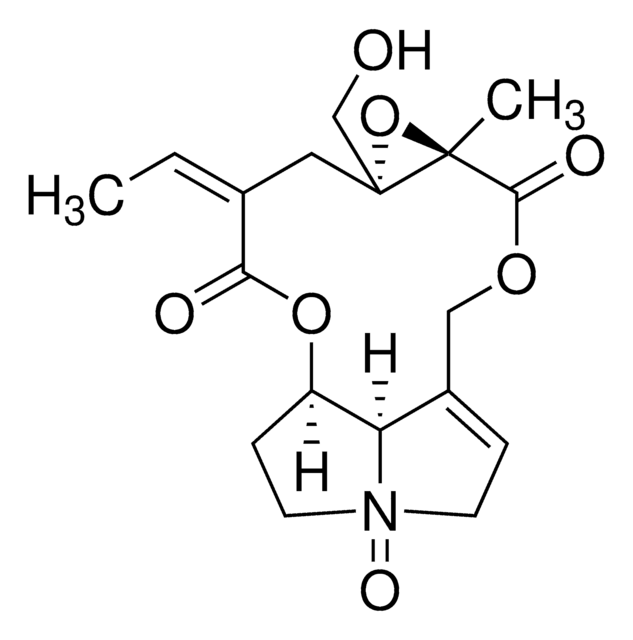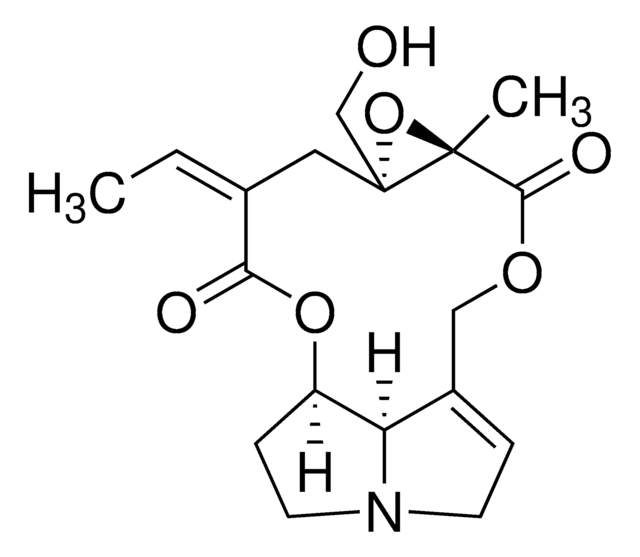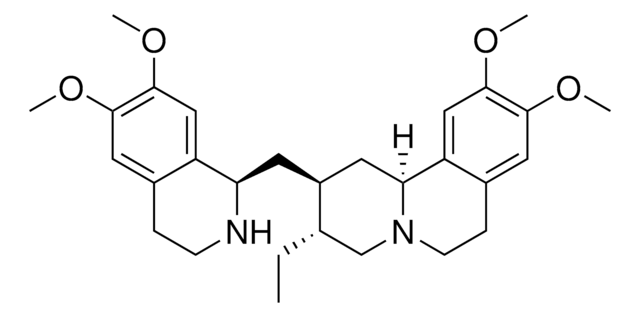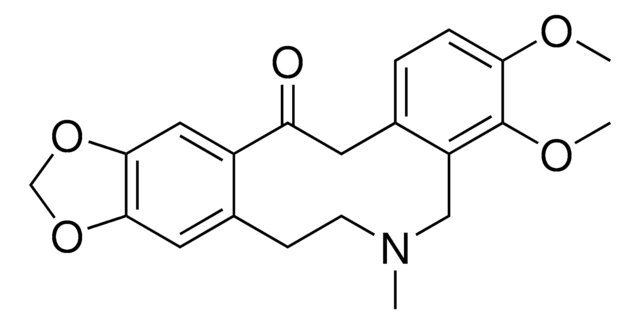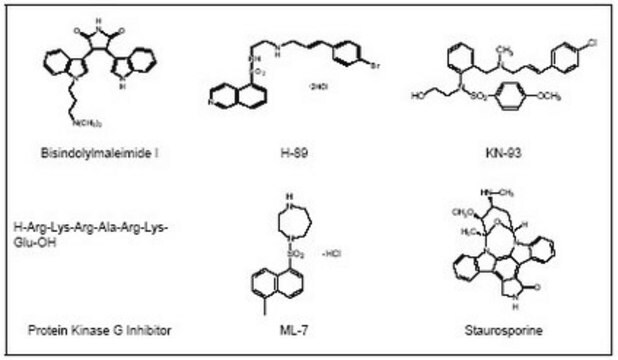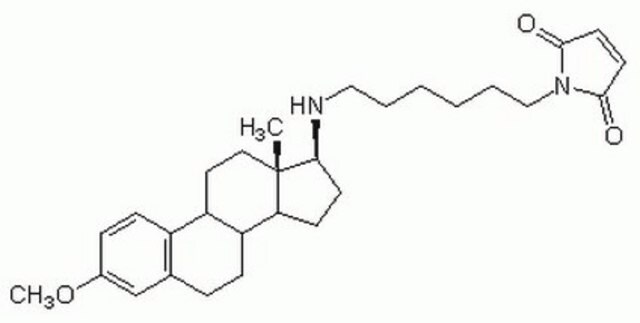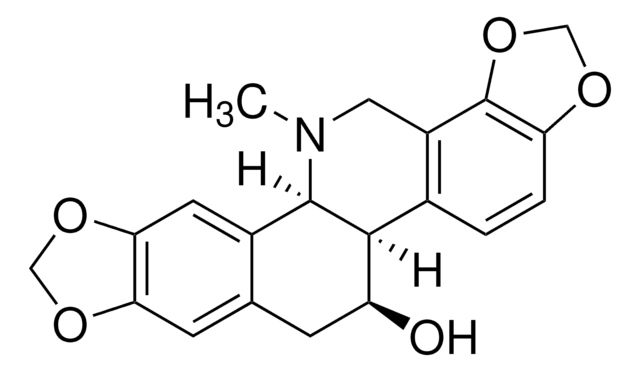220285
Chelerythrine Chloride
Naturally-occurring alkaloid.
Synonim(y):
Chelerythrine Chloride
About This Item
Polecane produkty
opis
Merck USA index - 14, 2051
Poziom jakości
Próba
≥97% (HPLC)
Formularz
solid
siła działania
660 nM IC50
producent / nazwa handlowa
Calbiochem®
warunki przechowywania
OK to freeze
kolor
light yellow to yellow
rozpuszczalność
water: 1 mg/mL
DMSO: 10 mg/mL
Warunki transportu
ambient
temp. przechowywania
−20°C
ciąg SMILES
[Cl-].[n+]1(c2c(c5c(c1)c(c(cc5)OC)OC)ccc3c2cc4c(c3)OCO4)C
InChI
1S/C21H18NO4.ClH/c1-22-10-16-13(6-7-17(23-2)21(16)24-3)14-5-4-12-8-18-19(26-11-25-18)9-15(12)20(14)22;/h4-10H,11H2,1-3H3;1H/q+1;/p-1
Klucz InChI
WEEFNMFMNMASJY-UHFFFAOYSA-M
Opis ogólny
Działania biochem./fizjol.
PKC
Ostrzeżenie
Uwaga dotycząca przygotowania
Rekonstytucja
Inne uwagi
Jarvis, W.D., et al. 1994. Cancer Res.54, 1707.
Barg, J., et al. 1992. J. Neurochem.59, 1145.
Herbert, J.M., et al. 1990. Biochem. Biophys. Res. Commun.172, 993.
Ko, F., et al. 1990. Biochim. Biophys. Acta1052, 360.
Walterova, D., et al. J. Med. Chem.24, 1100.
Informacje prawne
Hasło ostrzegawcze
Warning
Zwroty wskazujące rodzaj zagrożenia
Zwroty wskazujące środki ostrożności
Klasyfikacja zagrożeń
Acute Tox. 4 Dermal - Acute Tox. 4 Inhalation - Acute Tox. 4 Oral - Eye Irrit. 2 - Skin Irrit. 2 - STOT SE 3
Organy docelowe
Respiratory system
Kod klasy składowania
11 - Combustible Solids
Klasa zagrożenia wodnego (WGK)
WGK 3
Temperatura zapłonu (°F)
Not applicable
Temperatura zapłonu (°C)
Not applicable
Certyfikaty analizy (CoA)
Poszukaj Certyfikaty analizy (CoA), wpisując numer partii/serii produktów. Numery serii i partii można znaleźć na etykiecie produktu po słowach „seria” lub „partia”.
Masz już ten produkt?
Dokumenty związane z niedawno zakupionymi produktami zostały zamieszczone w Bibliotece dokumentów.
Nasz zespół naukowców ma doświadczenie we wszystkich obszarach badań, w tym w naukach przyrodniczych, materiałoznawstwie, syntezie chemicznej, chromatografii, analityce i wielu innych dziedzinach.
Skontaktuj się z zespołem ds. pomocy technicznej
